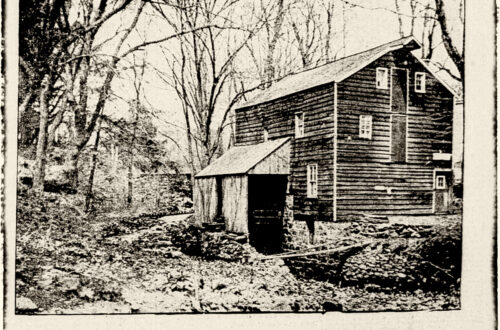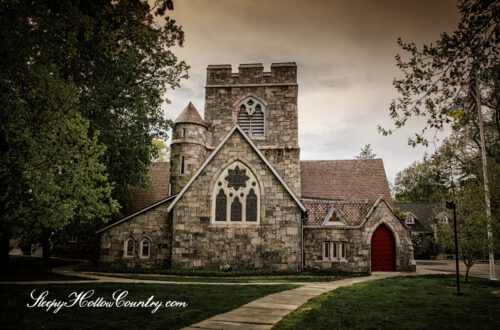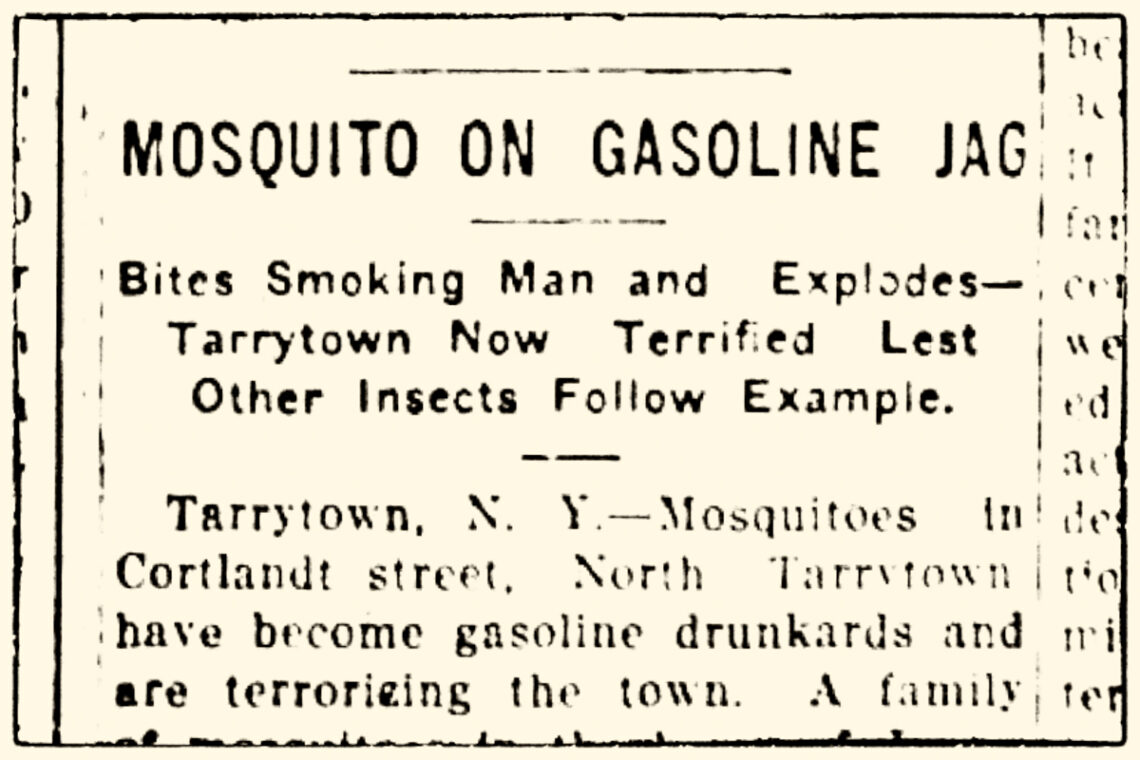
Revenge of the Exploding Mosquitoes!
“Tarrytown, N. Y.—Mosquitoes in Cortlandt street, North Tarrytown have become gasoline drunkards and are terrorizing the town.”
Nyack Evening Star, November 23, 1911
Imagine if you will, a flying menace. A tiny insect of prolific numbers, small enough to slip into any house, stealthy enough to land on your person without being noticed. Imagine the mayhem if that abundant pest were the common mosquito and it developed a taste for gasoline, turning itself into a flying Molotov cocktail. On October 15, 1911, James Brady of Cortlandt Street became the first victim of the North Tarrytown plague of exploding mosquitoes.
News articles are mixed on the source of the gasoline, with some pointing toward the tank of Brady’s own automobile and another to the Standard Oil silos just across the New York Central Railroad tracks at the intersection of Cortlandt and Josephine Streets. The United Press news wire cited a third potential source, reporting “Brady declares that they [the mosquitoes] are inhaling gasoline fumes from the town garage and as a result, their bites are of a peculiarly poisonous nature.”
Whatever the source, a mosquito intoxicated on gasoline is reputed to have caused the mayhem that fateful day. The mosquito, in rough shape from huffing gasoline fumes, took aim at the nose of James Brady just as he struck a match to light the tobacco in his pipe. As reported in one newspaper:
“There was a flash, a loud report, the mosquito disappeared, Mr. Brady was badly burned about the face, his clothing was ignited, and Mrs. Brady was scorched while trying to extinguish the flames. Fragments of the blazing mosquito flew upon a mattress in the room, set it on fire, and both Mr. and Mrs. Brady received a few more burns while throwing it out of the house.”
The San Antonio Light, October 20, 1911
With numerous ponds, lakes, and marshes in the Tarrytown area capable of producing billions of mosquitoes, the peril was clear—if Brady’s experience were correct, and if the gasoline habit spread from mosquito to mosquito, they could quickly become overwhelming swarms of flying explosives. Since electric-powered incandescent light bulbs were still years away from widespread availability, every home illuminated by candles, oil lamps, and gas lighting—nearly every home in the village—was prone to becoming a firestorm.
Newspapers Pick up the Story
From the relative safety of the west shore of the nearly three-mile-wide Hudson River, The Nyack Evening Star described a tense situation: “Neighbors are afraid that the gasoline jag habit will spread and the town will have to remain in darkness. The question now is: ‘How long does a gasoline jag last?'”
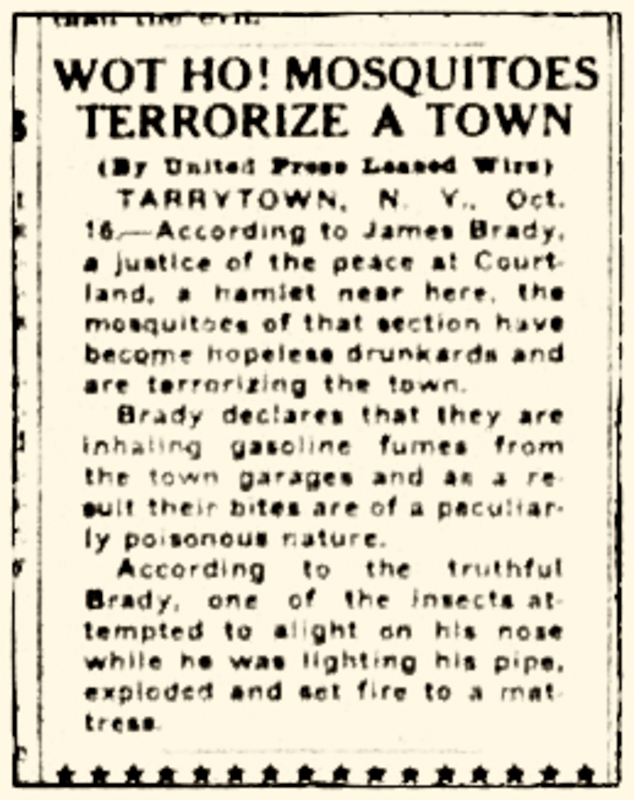
Taking a cheeky shot at both the temperance movement (Prohibition was just 9 years away) and Brady himself, The San Antonio Light opined “The principles of our prohibition friends must at once be applied to the mosquito to prevent the gasoline habit from becoming general. Of course, the only absolute cure that suggests itself, the only complete method of avoiding this new peril is for all men who own automobiles, or who are fond of pipes and cigars to give them up. It is a drastic remedy, but it is the sovereign cure. If Mr. Brady had not been addicted to the smoking habit he would not now be nursing a sore nose and the insurance adjusters would not be busy around his premises. The object lesson speaks for it self. Either the mosquito must go, or the public must give up pipes, cigars, and automobiles.”
Exploding Mosquitoes Turn the Tables
One village away, The Irvington Gazette noted that the insects had apparently turned the tables on humans, who had been using petroleum products to control mosquito populations. “This is about the meanest thing the mosquito has done yet. When we had all thought we had discovered a sure way to get rid of mosquitoes and malaria by using liberally the product of the Standard Oil Company, it appears that the mosquitoes are trying to become immune by absorbing gasoline into their systems.”
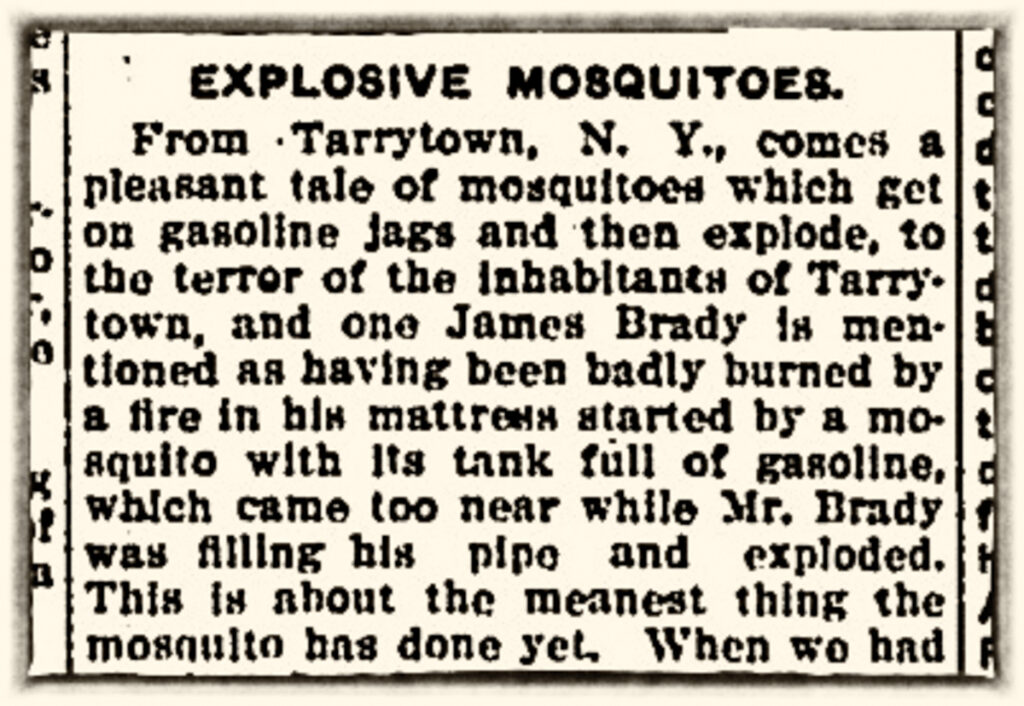
Curiously silent throughout this episode were North Tarrytown’s Maxwell-Briscoe automobile factory and the Rockefeller brothers, owners of the aforementioned Standard Oil and residents of North Tarrytown. Fortunately, the plague of gasoline-inebriated, exploding mosquitoes appear to have flamed out shortly thereafter. Could it be the forces of industry quashed the story? Perhaps the mosquitoes themselves embraced the temperance movement. Or is it just possible the “truthful” Brady met his match with a skeptical insurance adjuster?



